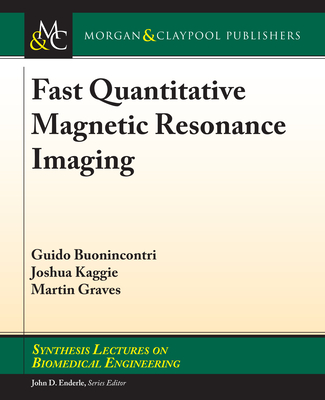Quantitative Magnetic Resonance Imaging, Volume 1
暫譯: 定量磁共振成像,第一卷
Seiberlich, Nicole, Gulani, Vikas, Campbell-Washburn, Adrienne
- 出版商: Academic Press
- 出版日期: 2020-11-26
- 售價: $6,700
- 貴賓價: 9.5 折 $6,365
- 語言: 英文
- 頁數: 1092
- 裝訂: Quality Paper - also called trade paper
- ISBN: 0128170573
- ISBN-13: 9780128170571
海外代購書籍(需單獨結帳)
商品描述
Quantitative Magnetic Resonance Imaging is a 'go-to' reference for methods and applications of quantitative magnetic resonance imaging, with specific sections on Relaxometry, Perfusion, and Diffusion. Each section will start with an explanation of the basic techniques for mapping the tissue property in question, including a description of the challenges that arise when using these basic approaches. For properties which can be measured in multiple ways, each of these basic methods will be described in separate chapters. Following the basics, a chapter in each section presents more advanced and recently proposed techniques for quantitative tissue property mapping, with a concluding chapter on clinical applications.
The reader will learn:
- The basic physics behind tissue property mapping
- How to implement basic pulse sequences for the quantitative measurement of tissue properties
- The strengths and limitations to the basic and more rapid methods for mapping the magnetic relaxation properties T1, T2, and T2*
- The pros and cons for different approaches to mapping perfusion
- The methods of Diffusion-weighted imaging and how this approach can be used to generate diffusion tensor
- maps and more complex representations of diffusion
- How flow, magneto-electric tissue property, fat fraction, exchange, elastography, and temperature mapping are performed
- How fast imaging approaches including parallel imaging, compressed sensing, and Magnetic Resonance
- Fingerprinting can be used to accelerate or improve tissue property mapping schemes
- How tissue property mapping is used clinically in different organs
商品描述(中文翻譯)
《定量磁共振成像》是定量磁共振成像方法和應用的「首選」參考書,特別涵蓋了放鬆度測量(Relaxometry)、灌注(Perfusion)和擴散(Diffusion)等專門章節。每個章節將以解釋映射相關組織特性的基本技術開始,包括使用這些基本方法時所面臨的挑戰描述。對於可以用多種方式測量的特性,這些基本方法將在單獨的章節中進行描述。在基本內容之後,每個章節將介紹更先進且最近提出的定量組織特性映射技術,並以臨床應用的總結章節作結。
讀者將學習到:
- 組織特性映射的基本物理原理
- 如何實施基本脈衝序列以進行組織特性的定量測量
- 映射磁性放鬆特性 T1、T2 和 T2* 的基本方法及更快速方法的優缺點
- 不同灌注映射方法的利弊
- 擴散加權成像的方法以及如何利用此方法生成擴散張量
- 地圖及更複雜的擴散表示
- 如何進行流量、磁電組織特性、脂肪分數、交換、彈性成像和溫度映射
- 如何利用快速成像方法,包括平行成像、壓縮感知和磁共振指紋技術,加速或改善組織特性映射方案
- 組織特性映射在不同器官的臨床應用













